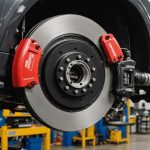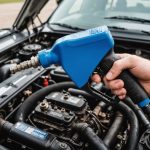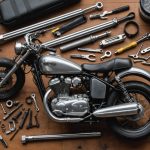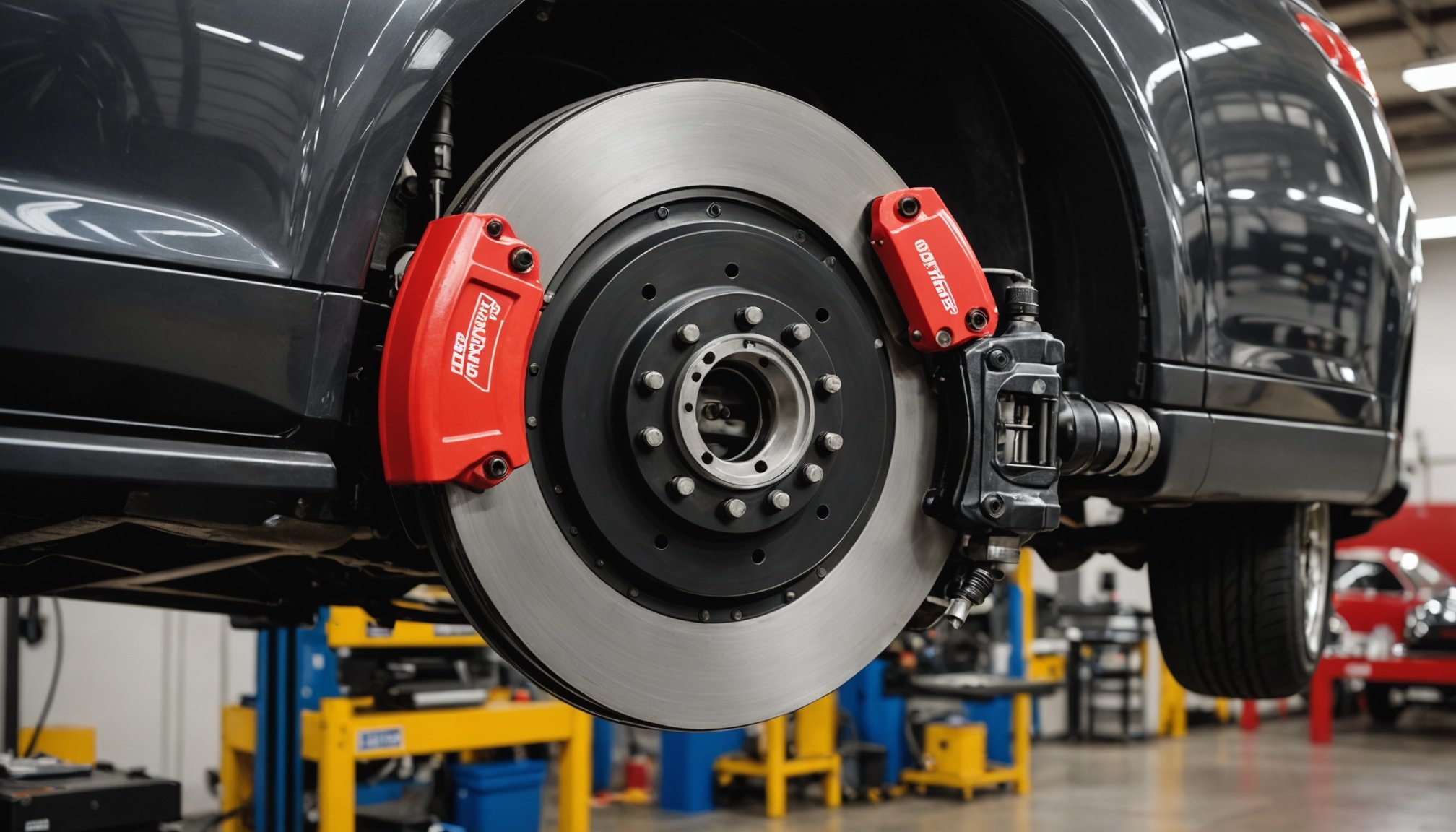Overview of Brake System Alignment
Proper brake system alignment is pivotal for ensuring optimal performance, especially in high-performance brakes used in demanding environments. Misalignments can lead to numerous issues such as uneven braking force distribution, increased stopping distances, and premature wear of brake components. These problems not only impact vehicle performance but also compromise safety by potentially causing dangerous driving conditions.
High-performance vehicles demand meticulous attention during the alignment process to maintain braking efficiency and ensure safety. This alignment ensures that all braking components work harmoniously, delivering consistent stopping power. Failure to correctly align brakes can result in imbalanced braking, causing the vehicle to veer to one side when brake pressure is applied, thereby increasing the risk of accidents.
Also to see : How can I stay informed about the latest vehicle safety technologies?
Adhering to strict safety protocols is essential during the alignment process. These protocols often include the use of certified tools and equipment, following manufacturer guidelines, and implementing a systematic approach to identify misalignments. Utilizing safety protocols not only enhances performance but also prolongs the lifespan of braking components by minimizing unnecessary stress and wear.
Essential Safety Measures
Safety measures play a crucial role in brake system alignment, particularly for vehicles emphasizing performance and reliability. Adhering to robust brake testing protocols ensures that all components function effectively and safely. This begins with utilising only certified equipment, which aligns with industry standards and provides accurate results. Certified equipment guarantees that every element of the brake system is evaluated with precision, crucial for maintaining the high demands of high-performance brakes.
Also read : What specific safety features should I look for in an SUV versus a sedan?
When discussing industry standards, understanding the regulations impacting safety measures is vital. These regulations often dictate the types of equipment used and the procedures followed. Compliance ensures that the alignment process not only adheres to safety protocols but also enhances the overall performance and longevity of the braking system. Moreover, utilising outdated or uncertified tools may lead to inaccurate readings, compromising both safety and functionality.
Brake testing protocols form the backbone of a reliable alignment process. These protocols should be regularly updated to reflect the latest in technology and safety advancements. Following a systematic approach, including regular inspections and adjustments, can prevent complications and ensure that the system remains in optimal condition, ultimately reducing the risks associated with misalignment.
Tools and Equipment
Selecting the right brake alignment tools is integral to achieving precise results, especially for high-performance brake tools. When considering must-have equipment, focus on tools designed for high-accuracy measurements and robust durability. These essentials ensure every component is perfectly aligned for optimal braking performance.
Must-have Tools for Brake System Alignment
Investing in quality tools like laser alignment systems and digital calipers is crucial. These tools provide precise measurements and allow for accurate adjustments. Additionally, specialised testing equipment like dynamometers offers valuable data on brake function.
Recommended Equipment Brands
Brands known for excellence in high-performance brake tools include Snap-on and Bosch. Their products are renowned for precision and reliability, making them a preferred choice for many professionals.
Maintenance of Testing Tools
Preserving the accuracy of test results hinges on regular tool maintenance and calibration. Follow manufacturer guidelines for upkeep and schedule calibrations to ensure continued reliability. Proper tool maintenance not only extends the life of the equipment but also guarantees precision in the brake alignment process, ultimately supporting superior performance optimisation.
Step-by-Step Testing Procedures
Implementing precise testing procedures ensures optimal performance in the brake alignment process. A structured approach is essential for both reliability and safety.
Begin by disconnecting the brake system from suspension components to allow for an accurate assessment of alignment. Follow manufacturer guidelines to ensure compliance during the brake alignment process. It’s crucial to evaluate the condition of rotors and calipers at the outset.
Next, use specialised high-performance brake tools to measure alignment angles and distances. These tools, such as digital calipers and alignment lasers, offer the precision needed for meticulous adjustments.
Following initial measurements, advance to critical checkpoints within your testing protocol. Inspect hydraulic lines for blockages or leaks that could impede performance. Use dynamometers to verify consistent brake force distribution, a key factor in ensuring reliability.
Once testing is complete, carefully document results to establish a comprehensive baseline for future comparisons. Analyze test data to identify whether adjustments are needed to optimize braking efficiency.
Making necessary adjustments is vital to performance optimization. Any identified misalignment should be corrected using precise tools and techniques. Regular testing and adjustments maintain systemic synergy and prolong component lifespan.
Troubleshooting Common Issues
When tackling brake system alignment, understanding common brake problems is crucial to maintaining optimal performance. Firstly, poor alignment can result in uneven brake pad wear, causing the vehicle to pull to one side during braking. Frequent inspections can identify these imbalances early. A thorough review of brake components, such as rotors and calipers, often reveals alignment discrepancies.
Another prevalent issue involves vibrations during braking. This may indicate warped rotors or imbalanced wheels, both fixable through proper troubleshooting. Use of precision brake alignment tools ensures accurate diagnosis and remediation.
Addressing alignment problems often requires systematic solutions. Begin by inspecting suspension components, as misalignments can originate from faults in these areas. Regularly verify wheel alignment, as this directly impacts brake system efficiency. Consistent safety protocols and performance optimization measures safeguard against recurrent misalignment.
Furthermore, testing procedures should include an examination of hydraulic lines for leaks or blockages, both of which can impair braking performance. By employing these preventive strategies, motorists can enhance their vehicle’s performance and safety. Comprehensive inspections and the implementation of systematic corrections mitigate these recurring issues, ensuring that the brake system alignment remains precise and reliable.
Case Studies and Best Practices
Exploring case studies offers valuable insights into high-performance brake alignment. Successful examples demonstrate how meticulous attention to detail can enhance alignment, improving both safety and performance. A well-documented case study involves a sports car manufacturer who achieved improved braking stability and reduced component wear by adopting systematic alignment techniques. This approach significantly elevated vehicle handling and safety, cementing the importance of thorough alignment processes.
However, not all alignments lead to success. Lessons emerge from failed alignments, highlighting the pitfalls of neglecting industry best practices. A notable instance occurred when a racing team overlooked proper brake calibration. This resulted in uneven brake wear, escalating expenses, and compromised track times. The error underscores the critical nature of expert adherence to alignment guidelines.
Expert recommendations further illuminate the path to optimal brake performance. Professionals advocate routine inspections, proper tool maintenance, and alignment adjustments tailored to specific vehicle needs. By embracing these strategies, one ensures reliable and consistent braking performance.
Adopting these industry best practices not only mitigates costly errors but also fosters confidence in the brake alignment process. Harnessing expert insights enhances overall vehicle reliability, establishing a benchmark of excellence in high-performance alignment.
Case Studies and Best Practices
Learning from case studies in brake system alignment provides invaluable insights into effective practices and potential pitfalls. One compelling example details a sports car manufacturer who rigorously adhered to high-performance alignment techniques, resulting in enhanced braking stability and reduced component wear. This systematic approach offered significant rewards in vehicle handling and safety.
Conversely, examining failed alignments underscores the risks of overlooking industry best practices. A racing team failed to prioritize proper brake calibration, leading to uneven wear and increased costs. Critically, this oversight demonstrated the necessity of strict adherence to alignment protocols and informed maintenance procedures.
Expert recommendations advance understanding by highlighting practical strategies for optimal brake performance. Professionals underscore the importance of consistent inspections and timely alignment adjustments, tailored to each vehicle’s specific requirements. Additionally, they advocate for maintaining the precision and calibration of testing equipment to ensure accurate results.
By integrating these industry best practices, individuals can significantly reduce errors and enhance vehicle reliability. This approach not only boosts performance but establishes a standard of excellence, benefiting both vehicle safety and the economic longevity of components. Aligning with expert insights fosters confidence and proficiency across all aspects of high-performance alignment.











